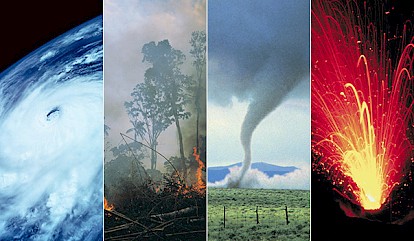The world's insurance bill from natural disasters this year: $115 billion
 Extreme weather events have caused an estimated $115 billion in insured financial losses around the world this year according to Swiss Re, the Zurich-based reinsurance giant. That’s 42 percent higher than the 10-year average of $81 billion.
Extreme weather events have caused an estimated $115 billion in insured financial losses around the world this year according to Swiss Re, the Zurich-based reinsurance giant. That’s 42 percent higher than the 10-year average of $81 billion.
The firm estimates that $50 billion to $65 billion of the total losses are a result of Hurricane Ian, the category 4 storm that pummeled parts of Florida’s west coast in late September with torrential rain, a 10-foot storm storm surge, and winds topping 140 miles per hour. Swiss Re ranks Ian as the second costliest natural disaster ever, in terms of insurance losses, after Hurricane Katrina struck south Louisiana in 2005.
It’s not just severe storms causing the damage. In February and March, torrential downpour inundated vast swaths of northeastern Australia and racked up an estimated 4 billion in financial damages, more than any other natural disaster in the country’s history. In June, a series of fierce thunderstorms in France sent large hailstones tearing through roofs and destroyed miles of vineyards. The total insured losses were estimated to be around $5 billion. All of them combined to pushed losses above $100 billion for the second year in a row.
Swiss Re conducts this analysis as part of providing reinsurance, a type of financial protection for insurance companies hoping to shield themselves from absorbing all the risk in their portfolios. Climate change has begun to pose major challenges to the industry, as increasingly frequent and severe storms generate unprecedented financial losses.
In a press release announcing the findings, Martin Bertogg, head of catastrophe perils at Swiss Re, noted the steady increase in extreme weather events over the past several decades, and underscored the importance of using updated models so the industry can more accurately predict damages in a given year.
“When Hurricane Andrew struck 30 years ago, a USD 20 billion loss event had never occurred before,” Bertogg said. “Now there have been seven such hurricanes in just the past six years.”
Approximately 33 million homes on the U.S. Gulf Coast and the eastern seaboard are at risk of hurricane damage, according to the property intelligence firm CoreLogic, with a total estimated replacement cost of $10.5 trillion. The country’s coastal communities tend to be underinsured, and chronically outdated federal flood maps fail to capture the risk to many flood-prone homes. Though uninsured homeowners can apply for federal funding after natural disasters, they are typically only able to recover a small fraction of their total losses.
The Federal Emergency Management Agency estimates that climate change will cause the size of areas with a high flood risk to increase by 55 percent along U.S. coastlines and up to 45 percent along major river systems by the end of the century.
You can return to the main Market News page, or press the Back button on your browser.

